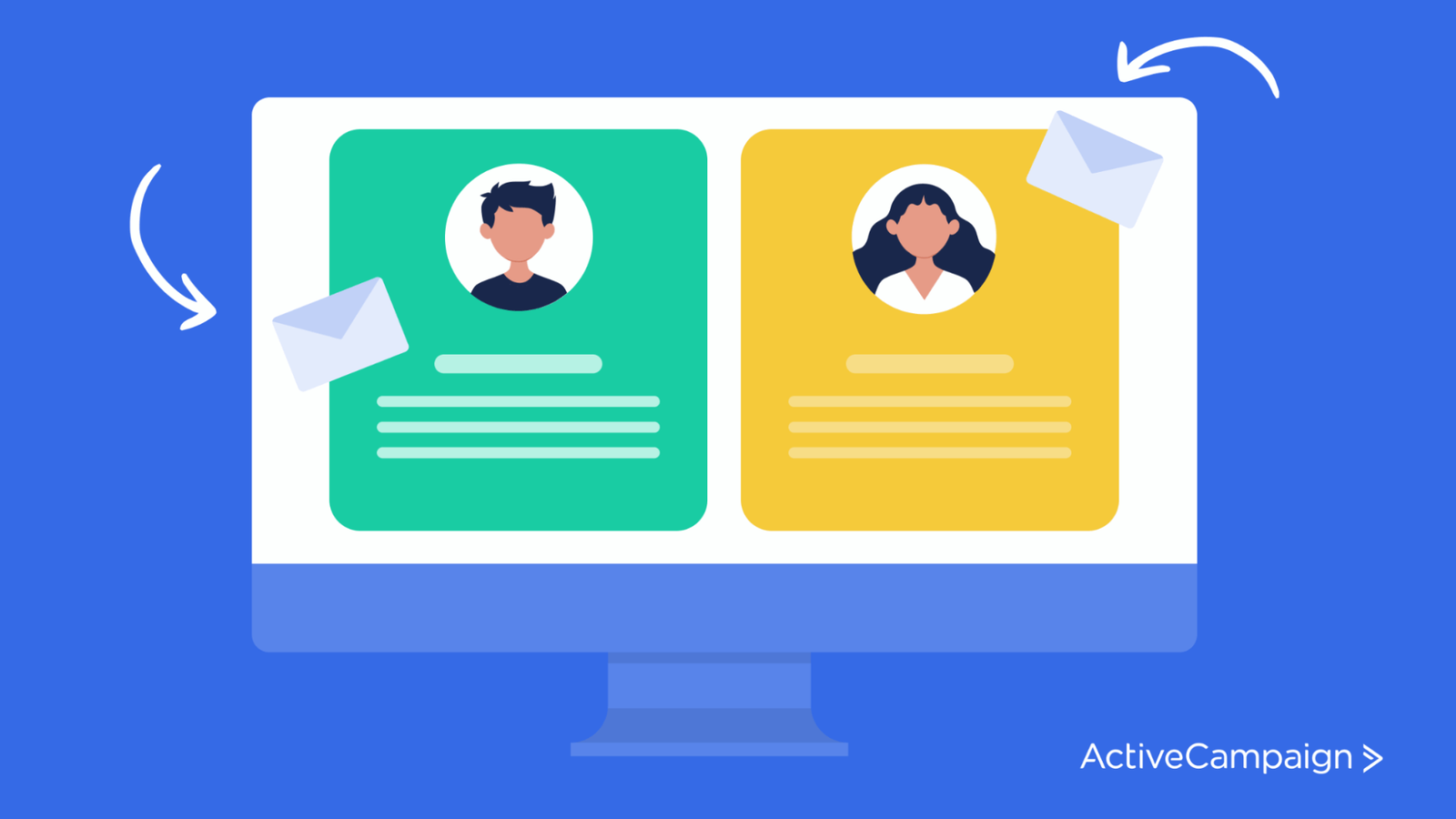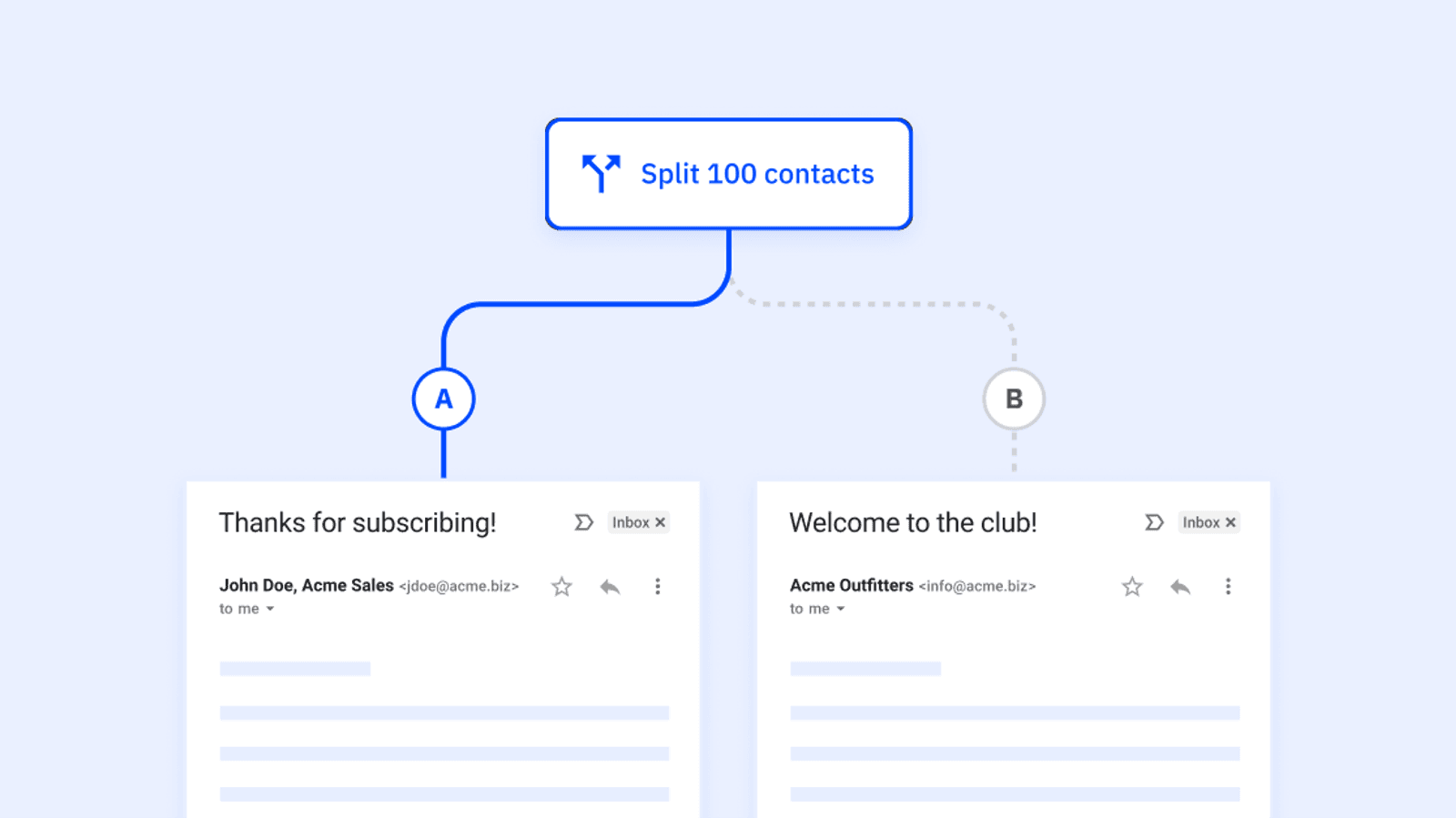If you’re in B2B, no matter how targeted your ads are, it’s almost impossible to reach the right person at the right company at the right time with a standard marketing campaign. But what if you could precisely target the right customers while boosting your average deal sizes and marketing return on investment (ROI)?
Enter account-based marketing (ABM). True to its name, ABM focuses on specific accounts right from the start, allowing you to deliver more personalized marketing content, accelerate sales cycles, and, of course, increase revenue.
However, ABM campaigns aren’t always straightforward—especially for companies used to more traditional inbound marketing strategies. This guide will cover the basics of ABM campaigns, their benefits, some examples, and some helpful tips to get you started.
Read on to learn more!
Table of Contents
What are ABM campaigns?
Account-based marketing (ABM) campaigns use personalized experiences to target specific accounts (like companies or even departments within a company) within a market.

These target accounts are usually known to marketing teams and sales reps before the customer experience begins.
For example, most small businesses already have a list of current or potential customers, such as those who have signed up for an email newsletter. Where conventional marketing approaches might try to sort through that list and identify leads, ABM campaigns start by creating Ideal Customer Profiles (ICPs) and targeting accounts that match them.
There are many good reasons for doing this. By targeting ideal accounts and customers early on, businesses can fine-tune their marketing communications and sales funnels to meet identified needs. Plus, they’ll only reach out to companies that need and can afford their products or services in the first place. That translates to greater chances of conversions and, ultimately, improves ROI, sales, and engagement.
But how does ABM compare with other types of marketing campaigns and strategies? As we’ll see, ABM and inbound marketing make a great team.
ABM and inbound marketing: an ideal partnership
Despite their many differences, ABM and inbound marketing often work together as part of a more holistic strategy. Here are a few details of how this partnership works and what it looks like.
- ABM decides which accounts to target, while inbound marketing tries to attract them. Most ABM campaigns start with sales and marketing working together to create ideal account personas, researching matching leads, and then creating account plans targeting each. From here, inbound marketing steps in to target these accounts and deliver personalized experiences.
- ABM helps guide and refine inbound marketing efforts. Inbound marketing works throughout the sales funnel to attract and convert customers. Meanwhile, ABM adjusts the funnel to capture specific “streams” of accounts and then works with inbound marketing to deliver experiences personalized to the accounts and their contact(s). Depending on the results, ABM might further adjust the funnel to maintain momentum or try other approaches.
- Inbound marketing and ABM can share some of the same resources. From lead data to nurturing content, many resources benefit both inbound marketing and ABM campaigns. For example, a personalized white paper created as part of an ABM campaign could also be made available on your website to bolster inbound marketing efforts.
- Some tools complement both ABM and inbound marketing. Since ABM and inbound marketing work closely together and often share resources, many tools like ActiveCampaign’s CRM and marketing automation platform help support both.
That’s all great, but it’s not automatic.
For this partnership to work, the marketing and sales teams also need to form a partnership—one of the key components of ABM campaigns that we’ll cover next.
Key components of ABM campaigns
Now that we know where ABM campaigns fit, what makes a good one?
While every campaign is different, most successful campaigns share a few common components. Here are just a few that every ABM campaign should have.
- Accurate ideal customer profiles and well-chosen accounts. If you don’t pick the right targets in the first place, you’re not going to get much value out of any ABM campaign. To ensure you get this right, develop your ICPs by interviewing and researching your favorite customers and keep updating and changing them as you learn more.
- Alignment of sales and marketing. ABM campaigns rely on a strong sales-marketing alignment to create account plans, target leads, and deliver personalized experiences. However, many approaches can leave both departments siloed with little coordination—despite sharing the same goal of driving more business. As a result, the marketing and sales teams should work as closely together as early as possible to guarantee your ABM’s success.
- Tailored messages for each account. A strong sales-marketing alignment means nothing if you aren’t delivering the right messages to target accounts. Rather than sending the same message to every account (and having it fall flat for most of them), ABM tries to deliver something tailored to each. This level of personalization is what helps make ABM campaigns so successful.
- Highly personalized types of content. As an extension of the above, sales and marketing materials must be highly personalized and relevant to their target accounts. While there’s no single way to do that, most campaigns will tailor their content around the account’s services, industry, size, company news, and so on.
- Uses different channels for different targets. Marketing materials aren’t the only personalized part of ABM campaigns—their delivery should also be personalized to the channels your target accounts use. While email is fairly universal here, more general approaches might include LinkedIn or a company blog. This is another reason ABM and inbound marketing often work so closely together.
That’s all well and good, but it seems like a lot of work—especially if you’re already invested in an existing strategy. Thankfully, ABM campaigns have many unique benefits, which we’ll explore in the next section.
Benefits of ABM campaigns
ABM campaigns offer several unique benefits over more traditional marketing strategies.

However, that’s not to say they work independently of other methods. Instead, ABM campaigns can help enhance other campaigns and strategies to deliver the following major benefits.
More personalized marketing
You’ll deliver more personalized marketing materials and campaigns by targeting key accounts and customers. Getting more personal is a key part of building stronger customer relationships and, as a result, boosting sales.
Shorter sales pipelines
More personalized marketing also leads to shorter sales pipelines. Rather than sit and hope that you’ve delivered the right message to the right person, ABM campaigns virtually guarantee it. In doing so, customers move rapidly through the sales funnel, leading to shorter sales cycles.
Higher conversions and ROI
Successful ABM campaigns also have higher conversions and a good ROI.
While shorter sales cycles help, the key drivers are successfully identifying and capturing the right target accounts. Here, higher conversions come from targeting companies more likely to need your services, while a higher ROI comes from targeting companies more likely to convert and spend more money.
Stronger sales-marketing alignment
Despite sharing similar goals, sales, and marketing are easily siloed. Since ABM campaigns require strong cooperation between sales and marketing, implementing them can help bridge many sales-marketing gaps. In addition to benefiting your ABM campaigns, a strong sales-marketing alignment will also improve other areas of your business.
Fewer wasted resources
All of these benefits boil down to 1 point: More results for less. With higher conversion rates and shorter sales cycles, you’ll reduce wasted resources while delivering even more sales. Talk about a win-win!
Strategy for successful ABM campaigns
Ok, so ABM campaigns are apparently pretty great. But how can you launch 1 yourself?

Effective ABM is all about starting from scratch. Since your goal is to target accounts based on your ideal profiles, a successful ABM campaign is built from the ground up—often without having to sort through potentially irrelevant lead lists.
Here’s a surefire account-based marketing strategy to get you started.
1. Align sales and marketing
As we’ve covered a few times, ABM campaigns can’t succeed without strong coordination and sales-marketing alignment. In fact, it’s the only way to create strongly personalized buying experiences.
While you should align forces as soon as possible, there’s no better time than the start of an ABM campaign. By following the rest of this strategy together, both organizations will remain on the same page, have a clear vision of every account persona, and ensure that the path from “lead” to “customer” remains streamlined.
If you’re just starting, a team of 1 marketer and 1 sales rep is often enough to start identifying and targeting accounts. As your campaign grows, you can assign additional salespeople to each marketer to help attract other target accounts. You can further scale your efforts by designating each salesperson to several accounts.
2. Identify target accounts
Now comes the big question: Which accounts should you target?
The first step often involves creating an ideal customer profile. This profile might include your ideal account’s business objectives, company size, revenue model, or products or services they already use. Of course, it’s possible to have more than 1 ideal customer profile—especially if your business offers more than 1 product or service.
With an ideal customer profile in mind, sales and marketing should start researching target accounts. Though there are many ways to research your targets, it’s helpful to create account personas that list how well each 1 aligns with your ideal customer profile. In doing so, sales and marketing are more likely to agree on which accounts to target.
Note that sales and marketing agreeing on target accounts is perhaps more important than the accounts themselves. In fact, accounts that both sales and marketing can agree upon will usually be more valuable!
3. Make plans for each target account
With your targets in hand, it’s now time to figure out how you’ll target them.
Again, sales-marketing alignment is crucial here. With both departments (hopefully) agreeing on which targets are worth pursuing, they should also have a good idea of how they plan to attract and convert them.
Since ABM campaigns call for a personalized approach to each target, each target should have its own account plan. Where the account personas from the previous step might identify the most viable or profitable customers, account plans use this data to map out specific contacts and strategies for reaching them.
Account plans should map out every part of the sales funnel if possible. That means devising a personalized customer experience for every account and potentially every contact (or group of contacts) associated with it.
4. Target the appropriate channels
Now it’s time to actually target your target accounts.
Though we’ve already mentioned a few ways you can do this, there’s no single “best” method. Instead, the best approach is to target whichever channels are best for your audience.
The most common (and often most effective) channels are email and social media. Where targeted email campaigns might be best for some accounts, other accounts may be more active or available on social media platforms such as LinkedIn. To this end, tools like ActiveCampaign offer social media integrations that work with just about every major channel.
5. Refine your approach with ABM tools
ABM campaigns don’t stop at sending your first email.
Instead, like any good marketing campaign, ABM campaigns should grow and adapt over time. To do so, they rely on relevant data and feedback, insightful analytics, and the ability to change strategies on the fly.
Now you could do all these things yourself, but it’s easier to let ABM-specific tools and software do it for you. With the right tools, you’ll not only be able to refine your approach—but you’ll also be able to manage it from a single point.
Though every ABM tool is slightly different, the best examples share the following features.
- Maintains high-quality account data. With a strong reliance on account plans and personas, prospect, and customer data can make or break your ABM campaign. The tool you choose should maintain this data and keep it updated as accounts change and take on new requirements.
- Provides insightful analytics. How do you know your ABM campaigns are successful? While an increase in sales is an obvious sign of success, it’s not the only one—nor the only factor you should consider. As a result, your ABM tools should have enough analytics and reporting features to tell you exactly what’s successful and what isn’t (bonus points for visuals).
- Works with your existing tools. Since ABM campaigns span across multiple areas, your ABM tools should also span across the multiple platforms you use for sales and marketing. While some ABM tools like ActiveCampaign can do it all (including inbound marketing), you should ensure compatibility if you’re tied to your existing tools.
- Identifies hidden patterns and trends. Some account data isn’t so easy to notice—especially the selling points. Many ABM tools help with this by using machine learning to identify trends in customer data that can help fine-tune your approach.
- Pricing and support. Everyone has a budget, and everyone needs support. Make sure the ABM tool you choose offers transparent pricing as you scale and provides convenient support if (read: when) things don’t work exactly as expected.
ActiveCampaign is 1 example of a multi-faceted ABM tool. By linking list building, targeted emails, and automation into a single tool focused on customer experience (CXA), ActiveCampaign has become a favored ABM tool for over 150,000 businesses.
Get The Most Out Of Account Based Marketing
FAQ
Still not sure about a few things? Not a problem. Here are some of the most common ABM-related questions we’ve encountered.
What does ABM stand for in marketing?
ABM stands for account-based marketing, a strategy used to target specific accounts (typically companies) and specific buyers within those companies on a more personal level. Though ABM can refer to other things even in the business world, it almost always refers to account-based marketing in a marketing context.
What makes an ABM campaign successful?
A successful ABM campaign will attract and close the “dream clients” you want to convert. Though the same could be said for other marketing initiatives, ABM campaigns require more personal customer experiences and a strong sales-marketing alignment.
How can marketers scale an ABM campaign successfully?
Scaling an ABM campaign involves the same strategy as starting one: Identifying new target segments and delivering personalized experiences. Many of these target segments will emerge naturally as your business grows and diversifies over time. As a result, ABM campaigns are ongoing, adaptable efforts for both new and current customers.
What is an ABM tool?
An ABM tool helps manage and refine account-based marketing campaigns and strategies. Though every tool is different, a good ABM tool will help you maintain and refine account data, identify new trends, and provide insightful analytics into the success of your campaign(s).
While some ABM tools are tailored to specific tasks, using an all-in-one platform(such as ActiveCampaign) is often easier, especially for smaller businesses.
Reach and convert the right people with ABM campaigns
ABM campaigns are 1 of the most effective ways to drive sales (especially for B2B companies) by delivering a laser-focused customer journey for every potential customer. By targeting the right accounts with the right personalized content, you’ll naturally shorten sales cycles, boost conversions and engagement, and improve your overall marketing ROI.
However, achieving great results requires great tools. With ActiveCampaign, you can automatically build account lists and personas, create personalized landing pages, and deploy tailored email marketing campaigns—all in 1 convenient tool.
For more information and to request a free demo, contact an ABM expert from ActiveCampaign today!






